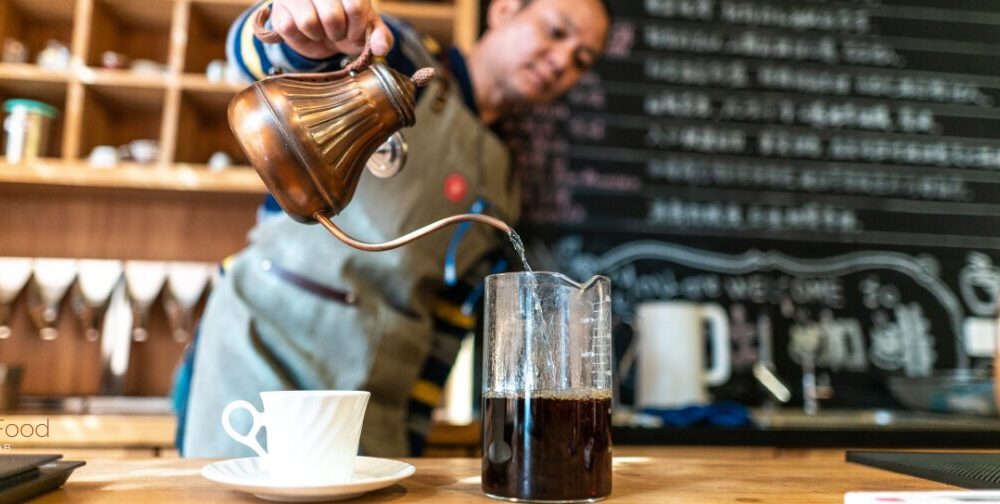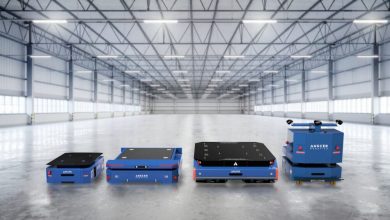Climate Change Is Coming for these Food Staples, So Technology is Taking Farming into the Lab

When talk of climate change comes up, the discussion naturally turns to greenhouse gas emissions and the push for a net-zero future. Part of that conversation revolves around how agriculture needs to adapt to meet the challenges of unpredictable weather patterns and temperature change, combined with increasing pressure to feed our growing global population.
Food staples like coffee and cocoa are already suffering the effects of severe weather brought on by climate change and other climate-related impacts. Meanwhile, demand for these staples is soaring, putting the pinch on consumers who seemingly can’t live without their cup o’ joe or daily chocolate fix.
However, there’s good news. New technologies are taking farming into the lab — providing long-term solutions for the climate-related turmoil that’s weighing on production of key commodities.
How climate change is affecting these key commodities
Significant supply disruptions in Brazil and Vietnam stemming from climate change, coupled with skyrocketing demand, are driving soaring prices. Brazil, which produces over one-third of the world’s coffee, has been dealing with the worst drought in over 70 years. Farmers have also reported that their 2025 crop has already been affected.
As a result, coffee prices remain at 13-year highs, although they haven’t yet reached the record high notched in the 1970s, when widespread frost ravaged 70% of Brazil’s coffee plants. In addition to drought, fires and frost, other climate-related issues are expected to raise temperatures in key coffee-growing regions beyond those needed for optimal growth by 2050.
One estimate suggests the amount of land available for growing coffee will be cut by 55% to 62% by 2050. As a result of all these factors, it’s expected that global coffee production will be cut in half over the next 30 years.
Climate change is also driving shortages in cocoa. According to JPMorgan, climate change-induced drought is the cause of crop destruction in West Africa, where about 80% of the global cocoa originates. Unfortunately, things will continue to get worse. The International Cocoa Organization estimated that global supply tumbled nearly 11% over the 2023-2024 growing season.
A related issue is chronic underinvestment in cocoa farms. Smallholder farmers are the primary cultivators of the crop, but they struggle to make a living income. As a result, they lack the capability to reinvest in their land, leading to lower yields over time.
Demand is rising for coffee and cocoa
As production feels the pinch from climate-related problems, demand for coffee and cocoa is soaring.
According to the National Coffee Association, daily coffee consumption is up almost 40% over the last two decades, reaching a 20-year high. According to the organization, 67% of American adults report having had coffee in the last day, and 75% of Americans report having coffee in the past week— more than any other beverage, including tap or bottled water. In 2004, just 49% of Americans reported having coffee within the past day.
It’s a similar story for cocoa, which also soared to record-high prices this past spring due to rising demand and plummeting production on the back of decades of underinvestment. The global chocolate market was estimated to be worth $119.4 billion in 2023, with a compound annual growth rate of 4.1% between 2024 and 2030.
Net, consumers are driving demand, but see higher prices linked to supplies that cannot overcome the barriers created by climate change.
How technology is addressing the root cause of rising prices
With available land for farming food staples shrinking and demand rising, the need for solutions is clear, but the good news is that some companies are working on answers to these problems.
For example, Pluri is a cell expansion technology company whose proprietary technology is being used to develop both regenerative cell-based medicines and agricultural and food technology products. Specific to AgTech, the company’s technology only requires the leaves of coffee plants to produce the same amount of coffee as what can be produced by 1,000 plants in just three weeks. Their 3D bioreactors mimic the natural conditions in which coffee is grown, producing cell-based ground coffee without the need to grow coffee plants. This also reduces reliance on resources like water, land, and electricity.
“We cannot rely on traditional methods alone to improve supply and stabilize pricing for our most needed and desired commodities. Rather, a commitment to innovation will help us prepare for how climate change will impact our ability to feed our global community,” said Yaky Yanay, CEO and President, Pluri. “We’re one of several companies exploring how technology can contribute to our supply of healthy, tasty, and sustainable food and drinks, while reducing our reliance on natural resources increasingly in short supply.”
In the cocoa space, Kokomodo’s innovative technology is similar to that being used for cell-based coffee in that it involves the use of bioreactors to harvest and process the cacao. Hence, the company can provide a stable supply of raw, unprocessed cocoa no matter what the weather conditions look like.
“We have a large collection of cell lines that are characterized and stable, a process that takes a few years to achieve,” Kokomodo CEO Tal Govrin told Food Navigator. “Our cell lines originate from different varieties and genotypes and from different parts of the cacao seedling, making the lines even more unique.”
Israel’s Celleste Bio and Finnish confectioner Fazer are also working on cultivated cocoa.
Beyond cell-based coffee, other solutions are under investigation. Atomo Coffee and Voyage Foods are working on beanless coffee from upcycled ingredients like chickpeas, date pits, and rice hulls, which are then combined with ingredients like green tea-derived caffeine.
Atomo opened a new roastery earlier this year to produce enough grounds for 90 million cups of coffee per year. Atomo claims its regular espresso generates 83% fewer carbon emissions and requires 70% less farmland than conventional coffee.
Hope for our favorite food staples
Coffee and cocoa aren’t the only food staples facing potential supply shortages due to climate change. Some other critical foods that are facing impacts from climate change include rice, wheat, beans, grapes and more. For example, the amount of land suitable for growing beans could be cut in half by 2050.
Looking more broadly, a Chatham House report found that yields of staple crops could plunge by almost one-third by 2050 if governments don’t ramp up the commitments they made through the Paris Agreement. In December 2015, world leaders at the UN Climate Change Conference agreed to several long-term commitments, including limiting global warming and reducing greenhouse gas emissions.
However, while climate change is impacting our food supply forever, there is hope on the horizon. More and more companies are working on sustainable and alternative solutions for critical food ingredients before they’re gone forever. As technology continues to develop, we will see an increasing number of solutions coming down the pipeline.
Disclosure: Pluri is a client of Quantum Media Group, LLC and the author Ari Zoldan is the CEO of Quantum Media Group, LLC





